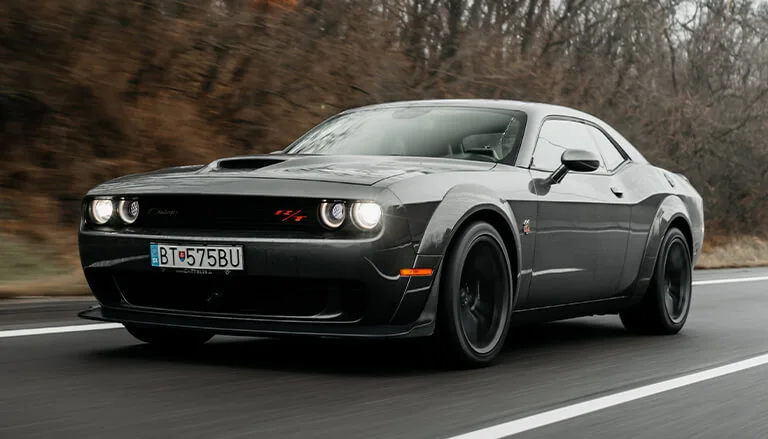A press car is a vehicle that is loaned to an automotive journalist. In return, the journalist is expected to review the car and advertise the benefits (or drawbacks) to their audience.
You might think that automotive journalists are living the proverbial dream. Who wouldn’t want to drive around in brand-new cars and pay nothing for the privilege of doing so?
But the truth is that there’s a lot of work that goes into automotive journalism. Journalists and influencers must build and maintain a loyal audience for car manufacturers to take them seriously.
They also need to establish good relationships and network with the PR departments at automakers like Skoda, BMW, Mazda, Audi and Ford.
In this article, we’ll cover how journalists get their hands on press cars. We’ll also go over how you can work towards getting a press car of your very own!

How automotive journalists get press cars
Automotive journalists get their press cars delivered from special vendors who receive the cars from manufacturers. Journalists are then expected to review the car and broadcast the findings to their audience.
In most cases, it’s a win-win for both parties. The journalist gets to test out a brand-new car delivered to their door, and the automaker gets promotion and praise (or criticism) in return.
Car manufacturers can then take this feedback on board to improve their vehicles in future. It’s a valuable exercise for automotive journalism, and it’s a tradition dating back many motoring decades.
How you can get access to press cars
Ever wondered how you can get your hands on a press car? It won’t happen overnight – but it’s definitely possible. Read on to find out how.

1: Build an audience
The single most important step to getting a press car is to build a loyal audience of car enthusiasts.
Whether you do it through a blog (like this), Instagram, YouTube or in your local newspaper column – you’ll need eyes on your content to attract the automakers.
Car manufacturers are always looking for journalists and content creators who have an influence over their audience. People trust influencers, and they’re more likely to buy something that is recommended by their favorite influencer.
Do you have what it takes to be an influencer?
Don’t worry – you don’t need to hop on the latest viral dance trend or promote dodgy skincare products. Sometimes all it takes to be a good automotive influencer is honesty and a refreshing take on car culture and the industry.
You could find your automotive niche and excel in it. You could vlog at car meets and shows, interviewing owners. You could write articles about vehicles, like me, and build a community of fans who love reading your blogs. The possibilities are endless!
The most important thing is that you start. You can figure everything else out along the way.
Do what you enjoy, and the followers will come. Once you’re established, it’ll be much easier to capture the attention of your favorite automakers and their press departments.
You don’t necessarily need thousands and thousands of followers, but bigger is usually better when dealing with the larger automakers. However, more specialist car companies might prefer to use micro-influencers (less than ten-thousand followers) to test out their products.
Build yourself a solid audience and you’ll be in a good position for dealing with multinational car brands.

2: Get some contacts
Once you’ve got the audience, you’ll need some noteworthy contacts in the automotive industry.
You might have already met some other journalists at industry events or car meets. You might know a guy, who knows a guy, who knows another guy. Make the most out of your contacts and get your name out there!
It’s a good idea to reach out to some automotive PR departments and do some good old-fashioned networking. Introduce your brand and tell them what makes it special. Let them know how they can benefit from working with you.
Don’t be disheartened if they’re not ready to work with you just yet. You will still be on their radar as a potential brand to work with in future.
Remember – good manners are key. If you’re rude, arrogant or blunt, people will remember.
People talk to each other in the automotive industry. It’s super tight-knit. If you get off on the wrong foot with one manufacturer, it’s likely that others will know about your behaviour too.
So fill up that contact book with other journalists, PR reps at car manufacturers, industry folk and anyone else who will listen to you. You never know where a good relationship might lead you!

3: Ask!
So you’ve got an audience and a veritable list of contacts. Now for the easy part. Ask to work with some automakers!
You can contact most public relations departments through a quick Google search (e.g search ‘Mazda Press Department’). Give them a call or drop them an email to propose the idea of working together.
Now, the chances are that you will already be on certain manufacturers’ radars if you have built a loyal audience and surrounded yourself with other enthusiasts.
Either way, don’t be shy to let them know why your brand is different. Emphasise why your brand would be an exciting one to work with.
In the age of social media and short-form video content, automakers are constantly looking for new ways to engage the next generation of drivers. If you can fill that gap, your partnership/s will become very valuable and lucrative.
So be confident, build up the courage and ask – you’ve earned it.
Why do automakers loan out press cars?
Automakers supply press cars to promote new vehicles. Journalists drive these cars to highlight the good, the bad and the ugly to prospective car buyers. It’s a PR activity that dates back a long, long time in the automotive industry.
There are typically two different types of press cars that are loaned out to automotive journalists – short-termers and long-termers.
While a short-term press car might only be in the possession of a journalist for one day, long-termers can be used by a journalist for months on end.
Short-term press cars are great for quick-fire reviews. The journo can get a feel for the car, highlight the positives and negatives, and quickly deliver a verdict to their audience.
Long-termers are more beneficial for assessing the reliability of a vehicle over a longer period of time.
Hearing your favorite automotive influencer praise the latest Skoda Octavia for being virtually indestructible can go a long way when you’re thinking of purchasing your next daily driver.
Doug DeMuro’s recent video does a fantastic job of explaining the ins and outs of press cars. We’d recommend giving it a watch if you’re interested.
Either way, press cars are known to be tested to their limits. Don’t be surprised if your first press car has a few harmless scuffs or marks. They’re built to be put through their paces.
Conclusion
So, there you have it. I know, I know – it’s easier said than done to become a prominent entity in the automotive world.
But if you want a press car, there’s no other way to do it.
The hard work pays off, though. Once you’re established with some good contacts, you’ll probably never have to buy a car ever again. But you probably will.
We hope that this article helped you to understand more about press cars and how journalists obtain them. If you have any questions, feel free to drop us a comment below.